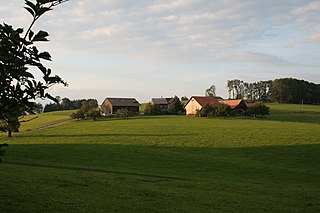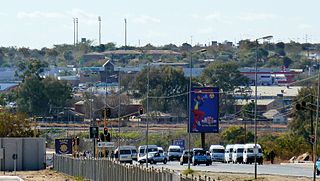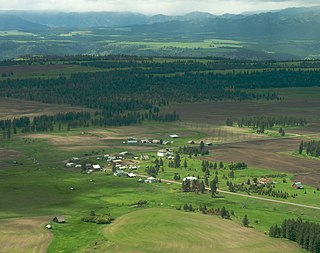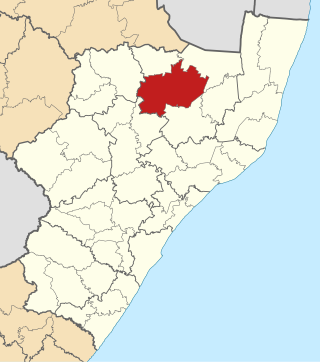A borough is an administrative division in various English-speaking countries. In principle, the term borough designates a self-governing walled town, although in practice, official use of the term varies widely.

A town is a type of a human settlement. Towns are generally larger than villages and smaller than cities, though the criteria to distinguish between them vary considerably in different parts of the world.
A district is a type of administrative division that in some countries is managed by the local government. Across the world, areas known as "districts" vary greatly in size, spanning regions or counties, several municipalities, subdivisions of municipalities, school district, or political district.

Russia is divided into several types and levels of subdivisions.

In general, a rural area or a countryside is a geographic area that is located outside towns and cities. Typical rural areas have a low population density and small settlements. Agricultural areas and areas with forestry are typically described as rural, as well as other areas lacking substantial development. Different countries have varying definitions of rural for statistical and administrative purposes.

An unincorporated area is a parcel of land that is not governed by a local general-purpose municipal corporation. There are many unincorporated communities and areas in the United States and Canada, but many countries do not use the concept of an unincorporated area.

A hamlet is a human settlement that is smaller than a town or village. This is often simply an informal description of a smaller settlement or possibly a subdivision or satellite entity to a larger settlement. Sometimes a hamlet is defined for official or administrative purposes.

An urban area is a human settlement with a high population density and an infrastructure of built environment. This is the core of a metropolitan statistical area in the United States, if it contains a population of more than 50,000.
A selsoviet is the shortened name for a rural council and for the area governed by such a council (soviet).
An urban area or tätort in Sweden has a minimum of 200 inhabitants and may be a city, town or larger village. It is a purely statistical concept, not defined by any municipal or county boundaries. Larger urban areas synonymous with cities or towns for statistical purposes have a minimum of 10,000 inhabitants. The same statistical definition is also used for urban areas in the other Nordic countries.

Hammanskraal is an trans-provincial region anchored in northern Gauteng province, South Africa. The region consists of multiple, residential, industrial, and commercial areas in a decentralized settlement pattern.

In geography, statistics and archaeology, a settlement, locality or populated place is a community of people living in a particular place. The complexity of a settlement can range from a minuscule number of dwellings grouped together to the largest of cities with surrounding urbanized areas. Settlements include hamlets, villages, towns and cities. A settlement may have known historical properties such as the date or era in which it was first settled, or first settled by particular people. The process of settlement involves human migration.

Abaqulusi Municipality is a local municipality within Zululand District Municipality, in the KwaZulu-Natal province of South Africa. It is named after the abaQulusi, a Zulu clan whose descendants live in the vicinities of Vryheid, Utrecht, Paulpietersburg and Louwsburg. They hailed from different origins but were unified by their allegiance to local Zulu royal homesteads.

In India, the Urban Local Bodies (ULBs), also called municipalities, are self-government institutions responsible for the administration of cities, towns, and transitional areas within a state or Union Territory. The 74th amendment to the Constitution of India in 1992 provided constitutional framework for the establishment of Urban Local Bodies.

Urban Planning in China is currently characterized by a top-down approach, high density urban development and extensive urbanization. China's urban planning philosophies and practices have undergone multiple transitions due to governance and economic structure changes throughout the nation's extensive history. The founding of the People's Republic of China in 1949 marks the beginning of three recent historical stages of urban planning philosophies and practice which represent a divergence from traditional Chinese urban planning morphologies and are broadly categorized as socialist, hybrid and global cities.

A rural municipality is a classification of municipality, a type of local government, found in several countries.












